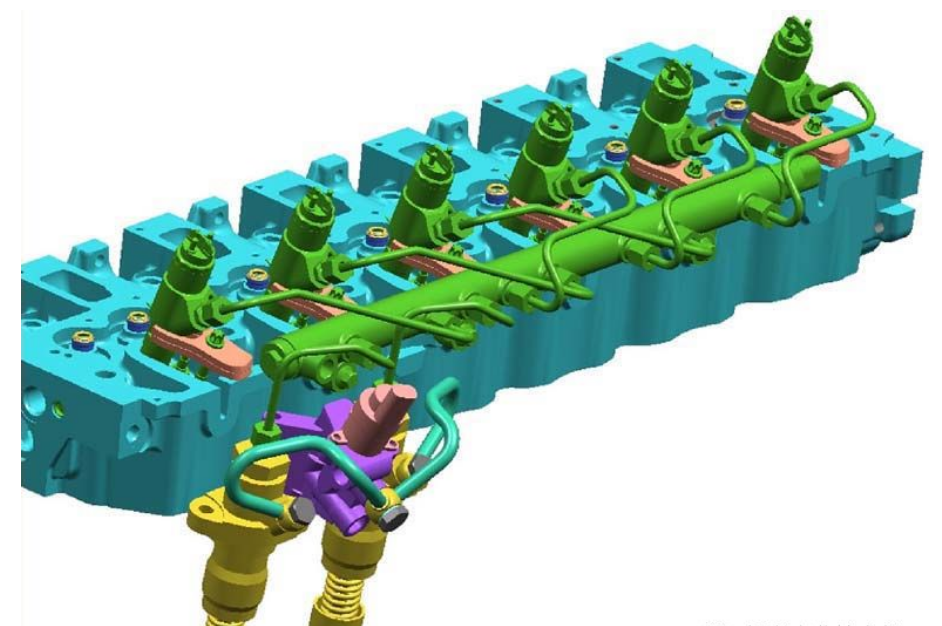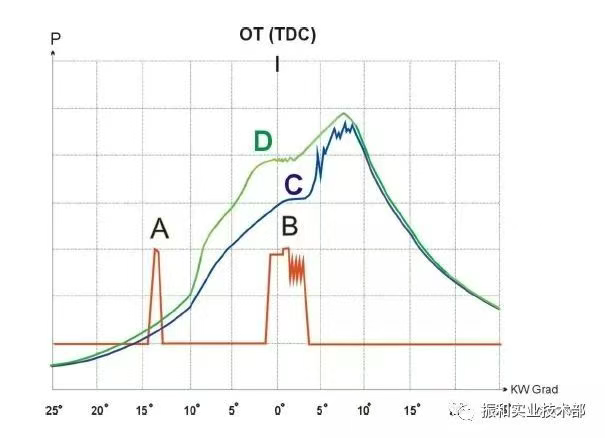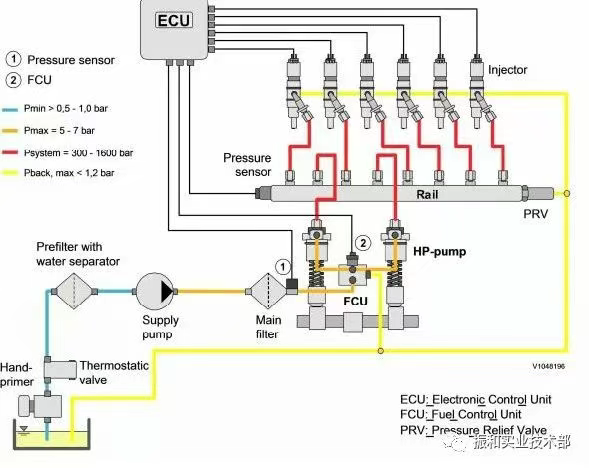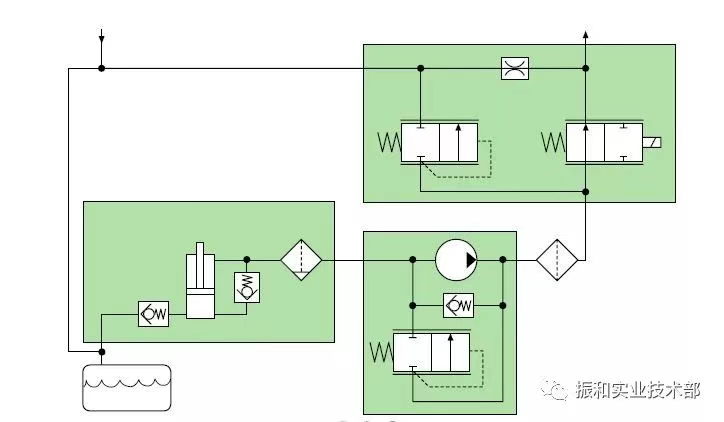Introduction
In the common rail system, fuel is distributed to the injectors from a high-pressure accumulator called "fuel rail". The fuel rail is supplied with high pressure by two fuel pumps. The pressure in the fuel rail and the start and end of injection in each cylinder are electronically controlled. The benefits of the common rail system include flexibility in controlling injection time and injection pressure. The advance injection that the common rail can send has been proven to reduce engine noise and NOx emissions.
The characteristics of this system have the following advantages:
1. The fuel pressure is independent of the engine speed and load conditions, and has flexible injection time and injection rate control.
2. High-pressure injection and good spray state can be achieved even at low engine speed and load.
3. Ability to send stable and subtle advance injection to reduce NOx emissions and noise.
4. The high-pressure fuel pump can output the highest torque at low speed on the drive shaft.
5. The common rail system can replace the traditional injection system on most engines without large-scale engine modification.
At present, the common rail injection technology has become popular and has basically replaced the traditional injection system. Since the diesel engine was invented, the common rail structure has been considered a promising injection system.
Currently, most diesel engine companies use the common rail system produced by Bosch, and DEUTZ is no exception. Let's take a look at the common rail system of DEUTZ.
DEUTZ common rail
DEUTZ TCD2012/TCD2013 common rail structure

Advance injection
Advance injection is a feature of the common rail system that must be mentioned; another important feature of the common rail system is the reduction of the noise level. Direct injection engines are characterized by higher combustion pressures and therefore higher noise levels than split engines. It has been proven that the best way to improve the noise level is to use advance injection. This is best achieved in the common rail system, which can send a stable advance injection fuel supply over the entire load/speed range of the engine.

A - Pre-injection
B - Main injection
C - Combustion pressure without pre-injection
D - Combustion pressure with pre-injection
Block diagram of DEUTZ common rail system

A belt-driven fuel delivery pump draws fuel from the fuel tank at low pressure via a pre-filter and pumps it through the main fuel filter to a solenoid-controlled fuel quantity control valve (FCU), which delivers the fuel to two camshaft-driven high-pressure fuel pumps, which deliver the fuel to the rail and further to the electrically controlled injectors via high-pressure pipes.
The rail acts as a fuel accumulator. The amount of fuel in the rail also buffers pressure fluctuations caused by the high-pressure fuel pump and the injection process.
A pressure sensor installed in the rail monitors the fuel pressure. This signal is used by the EMR to control the rail pressure by acting on the fuel quantity control valve, and excess fuel is returned to the tank. The rail pressure varies between 300 and 1600 bar for each injection. The EMR generates a pulse current, which is sent to the solenoid valve of each injector in turn and determines the start and end of each injection for each engine operating cycle. The common rail system can generate more than one injection per working stroke, achieving flexible injection rate control.
Low-pressure fuel line control

There is a hand oil pump in the hand oil pump unit. The hand oil pump is used to discharge air from the fuel system. Some systems are also equipped with a thermostat unit. The thermostat valve closes when the fuel temperature is below 15°C to recirculate the return fuel, thereby increasing the fuel temperature and preventing the accumulation of paraffin in the fuel filter. When the fuel temperature exceeds approximately 15°C, the thermostat valve opens and the fuel is sent back to the tank. When discharging air, the thermostat valve must be opened manually. The fuel mixed with air is pumped to the tank instead of returning to the system. The thermostat valve must be closed manually before the hand oil pump can be turned off. There is a prefilter under the hand oil pump unit. There is an oil-water separator with a discharge valve and sensor at the bottom of the prefilter.
Thermostat valve control function is optional
#deutz #cummins #caterpillar #bosch #Perkins
Drop us an email, let’s discuss more details
Copyright © Shijiazhuang Hovor Diesel Engine Co., Ltd. All Rights Reserved | Sitemap | Technical Support: 